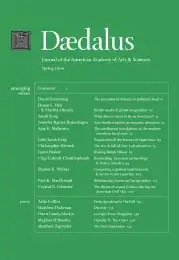Health media & global inequalities
Since its emergence in the nineteenth century, public health has primarily been the charge of nation-states acting to maintain the health of populations.1 In addition to taking steps to prevent disease, governments deploy the rhetoric of health and “hygiene” to police the behavior and movements of immigrants and colonial subjects.2 Yet the mobility of microbes that circulate “through air travel, commerce, and the circuits of capital”3 has given rise to transnational institutions such as the U.S. Centers for Disease Control and the World Health Organization, which track disease vulnerability worldwide and pursue improvement in the health of world populations. How is the project of global health bound up with the uneven exchanges of globalization,4 and how does it attempt to produce “healthy” subjectivities across lines of race, gender, class, language, and citizenship?
Public service campaigns deploy mass media to frame health as the responsibility of individuals and communities. From instructing parents to have their children vaccinated to warning against the risks of illegal drugs, media campaigns provide states and other agents with a means to shape citizens’ health behaviors. This “hypodermic” model of education, as media studies scholars term it, presumes that information can be “injected” into passive audiences to produce desired changes in attitude or behavior.5
Not only the content, but also the narrative and aesthetic features of health communications mediate and impact their reception. These features, in fact, “create a range of publics”6 and resist association with any idea of a universal “public” to be educated. Public health campaigns, therefore, demand interdisciplinary analysis that combines textual interpretation with research that addresses local and transnational forces that affect the health of populations. We know that discourses about health shape and direct people’s experiences of embodiment and subjectivity, their perceptions of risk, and their health behaviors; so how do educational campaigns that intend to transmit health information across national boundaries affect these experiences? What kinds of subjectivity are called forth when health information travels?
While epidemiological data confirm the quantitative aspects of global disparities in health, mass-mediated health discourses allow us to study the cultural and political dynamics of these disparities. Two such discourses–Bodies . . . the Exhibition, which displays anatomical specimens produced in China for consumption in wealthy first-world nations, and a comic book produced by international health and human rights agencies to raise HIV/AIDS awareness among young people in the developing world–illustrate the role of global inequality in shaping the production and consumption of health messages. Both are international public health communications complicated by the fact that their materials have originated in locations far removed from the sites of their consumption. Bodies . . . the Exhibition both leverages and conceals the economic inequalities and health disparities between its sites of production and consumption; the HIV/AIDS comic book campaign attempts to redress global health disparities, but ultimately avoids engaging questions of inequality. These representations of health, bodies, and human rights circulate between developed and underdeveloped nations, overemphasizing universal human qualities and neglecting the critical role of economic and social vulnerability in distributing health disparities unevenly around the globe.
. . .
